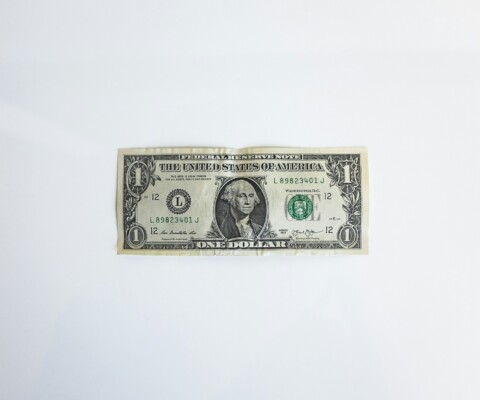A reserve currency is the name given to a currency held in huge quantities by central banks and other financial institutions.
These currencies take on a role far beyond their borders; they’re used globally as part of international trade, to settle debts and stabilise economies.
Currently, the US dollar is the world’s reserve currency, but this hasn’t always been the case – and its position is never bulletproof.
Understanding the history and implications of reserve currencies offers insights into global economic power and what the future might hold for the US dollar.
In this article, we’ll explore what makes a currency a reserve currency, dive into the history books, and consider the forces that could drive change – including digital currencies, globalisation, and the geopolitical landscape.
Table of contents
- Reserve currencies through the years
- How does a currency become a reserve currency?
- Which currencies could threaten the dollar as the world’s reserve?
- How does the dollar’s reserve status affect businesses?
- Why do reserve currencies matter?
- Conclusion
- 10 FAQs about reserve currencies
Reserve currencies through the years
The concept of a reserve currency isn’t new, although the way they earn reserve status has changed slightly.
Historically, global reserve currencies were reflective of the dominant economic empire – with military strength playing a role.
The Roman denarius was used across the Roman Empire for its stability and widespread acceptance.
The Spanish real/dollar was used all over the world from the 16th to 18th century, supported by Spain’s colonial empire and its vast silver reserves in the Americas.
The British pound sterling saw similar dominance in the 19th and 20th centuries as the British Empire reached its industrial and colonial peak.
Today, the US dollar holds the mantle as the world’s primary reserve currency – a position it’s maintained since the end of World War II.
Backed by the strength of the US economy, the dollar accounts for over 59% of global foreign exchange reserves.
How does a currency become a reserve currency?
So, we know a reserve currency is a type of currency held in significant quantities by governments and institutions as part of their foreign exchange reserves.
But how does a currency achieve this coveted status? The journey to becoming a reserve currency is shaped by a combination of economic strength, trust, and global influence.
Here are the key factors that push a currency along the journey to reserve currency status:
Economic stability and strength
The backbone of a reserve currency is the strength of its birth country’s economy.
Countries and institutions need to trust that the currency will hold its value over time. This trust is often tied to the country’s GDP, low inflation rates, and tough financial infrastructure.
For example, the US dollar became the world’s dominant reserve currency following World War II, largely due to the size and resilience of the US economy at the time and the perception of the US as a powerful, successful nation.
Political stability
Reserve currencies typically come from nations with stable political systems. This reduces the risk of sudden currency devaluation caused by dramatic political change.
For instance, the euro has progressed as a partial reserve currency due to the collective economic and political stability of the European Union.
Global trade and investment influence
A currency is more likely to gain popularity as a reserve if the country it originates from plays a dominant role in global trade. This encourages other nations to accept it for international payments.
This is well demonstrated by the US dollar, as it’s widely used in the pricing of commodities like oil and gold.
International confidence and trust
For a currency to become the world’s reserve, foreign governments and institutions must trust that the country it’s tied to will aim to keep the currency strong. This includes confidence in the country’s monetary and fiscal policies.
Any mismanagement of these policies – such as signs of hyperinflation or defaulting on debt – can breakdown trust and damage a currency’s chances of reserve status.
Liquidity and accessibility
A reserve currency must be highly liquid and readily available. There needs to be lots of it for central banks and international institutions to buy, sell, and trade the currency easily.
The dollar’s liquidity is strong, thanks to a vast global market for US Treasury bonds and other dollar-denominated assets.
Historical agreements and geopolitics
Historical events often play a significant role in establishing a reserve currency. For example, the Bretton Woods Agreement (1944).
Comprising a series of agreements, the Bretton Woods Agreement brought together 44 countries in anticipation of the end of World War II with the intention of ensuring exchange rate stability, preventing competitive devaluations, and promoting economic growth.
As the largest economy at the time, the US dollar was elected as the primary global reserve currency, pegged to gold, while other currencies were pegged to the dollar.
The Bretton Woods system collapsed in 1971 when President Richard Nixon ended the dollar’s convertibility to gold. However, the dollar retained its dominance due to its existing widespread use.
Network effects
When a currency reaches reserve status, it typically finds it easier to stay there. More countries hold it because others do, creating a network effect that keeps it top of the pile.
It takes something significant to disrupt the norm, which is why reserve currencies change so irregularly.
Which currencies could threaten the dollar as the world’s reserve?
Despite its long reign, the US dollar’s position as the world’s reserve currency is never guaranteed. Here are some of the currencies that could threaten its throne:
Nontraditional reserve currencies
Traditionally, the dollar has been challenged by other members of the so-called ‘big four’: the yen, euro, and pound. However, in recent years, the International Monetary Fund IMF reports a rise in the share of what it calls nontraditional reserve currencies. These include:
- Australian dollar
- Canadian dollar
- Chinese renminbi
- South Korean won
- Singaporean dollar
- Nordic currencies
Its findings suggest that nontraditional reserve currencies now account for almost 12% of global foreign exchange reserves. This figure was around 2% in the early 2000s.
If the trend continues, it could raise questions about the dollar’s stability as the world’s reserve currency.
Digital currencies
Cryptocurrencies like Bitcoin and the introduction of Central Bank Digital Currencies (CBDCs) could challenge the dollar by offering faster, cheaper cross-border transactions.
According to a report from the University of Oxford, China is currently leading CBDC development, and the US is also accelerating its digital dollar efforts.
This could mean three potential outcomes: more dollar dominance, a global economy split into competing blocs (such as a US-led bloc or a China-led bloc), or a connected international system.
With 90% of central banks considering the use of CBDCs, digital currencies could become a common player in the global financial system and counter the worldwide use of the dollar.
BRICS coalition
Countries like Russia and China are actively seeking alternatives to the dollar, particularly in response to sanctions and geopolitical tensions.
Initiatives like BRICS (Brazil, Russia, India, China, South Africa) are exploring ways to trade directly with one another and settle in local currencies to avoid reliance on the dollar.
There’s even been some speculation about a BRICS currency.
If such proposals were to materialise, the dollar would likely face some pressure as the world’s reserve currency.
How does the dollar’s reserve status affect businesses?
For businesses, the dollar’s dominance makes international trade simple. Transactions are often carried out in dollars, even when neither party is based in the United States.
However, this also creates challenges:
Currency risk
Changes in the dollar’s value can impact the cost of imports, exports, and cross-border payments.
Currency values change by the second, making it difficult for businesses to manage their costs and set budgets – especially when purchasing goods or services in foreign currencies.
By ineffectively managing currency risk, businesses could face significant cash flow issues and pressure on their profit margins.
If your business engages in international trade, fill in the form below to discuss how Privalgo can help you manage foreign exchange risk and protect your profits.
Debt management
Many emerging markets take out international loans in dollars, making them vulnerable to changes in US monetary policy.
When the Federal Reserve raises interest rates, borrowing costs for these dollar-denominated loans increase.
This is because higher US interest rates often strengthen the dollar, making it more expensive for emerging markets to service their debts.
Governments and businesses in these countries must allocate more of their local currency revenues to meet their dollar obligations, which can strain public budgets and corporate profitability.
Read: How do interest rates affect the US dollar?
Competitiveness
A strong dollar can make US exports less competitive; it becomes expensive for nations and businesses to purchase US goods with their domestic currencies.
However, dollar strength also means it becomes cheaper for the US and businesses within it to buy goods and services from overseas, boosting export competitiveness.
Why do reserve currencies matter?
For businesses, understanding the role reserve currencies play is essential. Here are the key points:
- Cost management: Reserve currencies like the dollar influence the cost of imports, exports, and borrowing for businesses all around the world.
- Strategic planning: Changes to the world’s reserve currency could considerably affect global trade patterns, investment flows, and market access.
- Risk management: Businesses operating internationally can protect themselves through currency hedging strategies and diversifying their trade practices to prevent over-reliance on the dollar.
Conclusion
The status of a reserve currency is incredibly important for the global economy and businesses worldwide.
While the US dollar remains the dominant reserve currency today, history shows that no currency’s reign is guaranteed.
Emerging challenges from digital currencies, coalitions like BRICS, and shifts in global trade dynamics suggest a future where the dollar may face stronger competition.
For businesses, understanding these trends and managing currency risks is vital to staying competitive in an evolving global landscape.
By staying informed and adaptable, businesses can navigate these changes and seize opportunities.
At Privalgo, we specialise in helping businesses manage currency risk. Our tailored hedging strategies can help your business minimise the risk of currency movements and capitalise on potential market opportunities.
Fill in the form below to chat to one of our currency specialists to see how we can help your business scale further, faster.
10 FAQs about reserve currencies
Below are 10 frequently asked questions about reverse currencies, including what they are, their future and how they impact businesses. Some answers refer to points already discussed in this article.
What is the world’s reserve currency?
The US dollar is currently the world’s primary reserve currency, accounting for over 59% of global foreign exchange reserves.
Is the UK a reserve currency?
The British pound sterling is not a dominant reserve currency but holds a smaller share of global reserves.
It was the world’s primary reserve currency during the height of the British Empire in the 19th and early 20th centuries.
What will replace the US dollar?
Potential contenders to replace the US dollar include the Chinese renminbi, digital currencies such as central bank digital currencies (CBDCs), and a hypothetical BRICS currency.
However, dethroning the dollar would be a significant event and no single alternative currently matches the dollar’s liquidity and trust.
Why has the US dollar remained the dominant reserve currency?
The US dollar’s dominance as a reserve currency has largely been due to the size and stability of the US economy, the liquidity of dollar-denominated assets like Treasury bonds, and its widespread use in global trade and financial systems.
Also, historical agreements such as the Bretton Woods system cemented the dollar’s role in the international monetary framework, creating a network effect that reinforces its dominance.
How does a currency achieve reserve status?
A currency becomes a reserve currency by gaining trust through the strength and stability of its home economy, political reliability, and global trade influence.
Historical agreements and liquidity also play significant roles.
What are the benefits of a reserve currency for the issuing country?
Issuing the reserve currency brings benefits such as continuous capital inflows, lower borrowing costs, reduced foreign exchange risk in trade, and geopolitical leverage.
How do reserve currencies affect global trade?
Reserve currencies simplify global trade by providing a widely accepted medium of exchange, reducing currency risk for businesses and governments engaged in international transactions.
Could digital currencies challenge traditional reserve currencies?
Yes, cryptocurrencies and CBDCs have the potential to disrupt traditional reserve currencies by offering faster, cheaper cross-border transactions.
China’s e-CNY is an example of a CBDC that could challenge the US dollar.
What role do reserve currencies play in emerging markets?
Emerging markets often borrow in reserve currencies like the US dollar, which makes them vulnerable to exchange rate fluctuations and US monetary policy changes, increasing the cost of debt repayments.
Why are reserve currencies important for businesses?
Reserve currencies impact businesses by influencing the cost of imports, exports, and borrowing.
Companies that understand and manage currency risks can maintain competitiveness and protect their profit margins.


